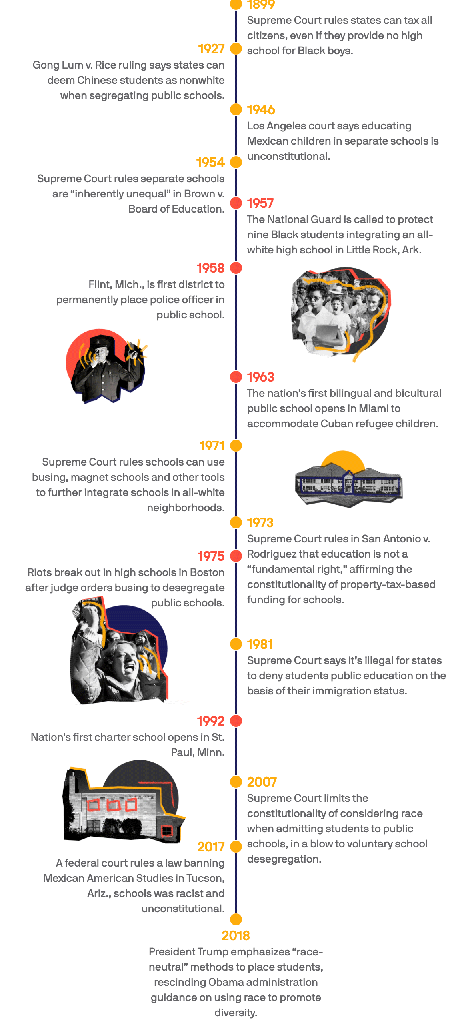|
19th Century Begins
Federal Involvement

1860's
Cooperative
extension services
and federal funding
added
to grants universities
1890's
Agricultural and
vocational education
provided federal funding
until
1997
when programs
were unified to provide one-stop shopping
1900's
First public community college
First junior high school
Goal to improves HS graduation rates.
1910's First Montessori
school
Cooperative Extension Services
from 1860
1920's First educationally
oriented nursery schools
1930's Limiting child labor
in non-agricultural jobs
hopes to increase
education levels

College
and Head Start Gets
Governmental Attention
1940's
GI education benefits
ended long-standing college only for the wealthy.
1950's Federal
funding increased
for science, math and foreign language education
as Sputnik heighted the
Cold War.
Eventually,
Transportation funding
for school children
was provided by all states.
Editor's Note: As late as the mid 1950's
some elementary students
living within
a 30 minute walk of school couldn't take the bus.
1960's Education Industrial Complex
Expanded College and Free CC
Education
MBA popularized
when former U.S. Air Force
engineering oriented
Whiz Kids
needed business
and management education to properly reorganizing Ford Motor
Company.
College enrollments expanded
because of increased Baby Boomer demand and hope for a
Vietnam War education deferment.
Head Start eight-week summer programs provide low-income
child assistance.
Unionization
of public employees
laws
followed
President John F. Kennedy 1962 Executive
Order 10988
Political Suspension
by local
boards
of students
for bringing political protest inside their schools declared
unconstitutional by the
1969
U.S. Supreme Court
in Tinker
v. Des Moines Independent Community School District.
In his dissent, Justice Black wrote: "This case, wholly without
constitutional reasons in my judgment, subjects all the public
schools in the country to the whims and caprices of their
loudest-mouthed, but maybe not their brightest, students." Now
we know: He was right
Two
years later,
in Goss
v. Lopez,
the Court
established and enumerated the due-process procedures to which a
student suspended for less than 10 days is entitled.
In dissent, Justice Powell wrote: "One who does not comprehend
the meaning and necessity for discipline is handicapped not
merely in his education but throughout his subsequent life."
In
the years since,
courts and legislatures gave the neighborhood school yet another
big legal obligation:
Mainstream and educate severely disabled students .
We now have "The Language Police," education historian Diane Ravitch's
meticulous but horrifying narrative of how the major textbook
publishers, the testing companies and state education
departments have
reduced what public-school kids learn to politically correct,
politically laughable pabulum and swill.
1970's Private colleges
expanded marketing mix
with evening programs, credit for life experience non-credit programs for business and foreign student enrollments. Cash was maximized with the help of enrollment
consultants who design cost affective student program s, designed promotional materials to maximize college
appearance and to developed a multi-tiered
tuition pricing system. It increase tuition
more than cash needs with less desirable students paying 100%. Their excess tuition provided grant funding for more desirable students.
Tuition increase dramatically
as charged became a function of
what a student could pay and borrow from government sponsored
low interest deferred loan programs plus Pell Grants.
|












